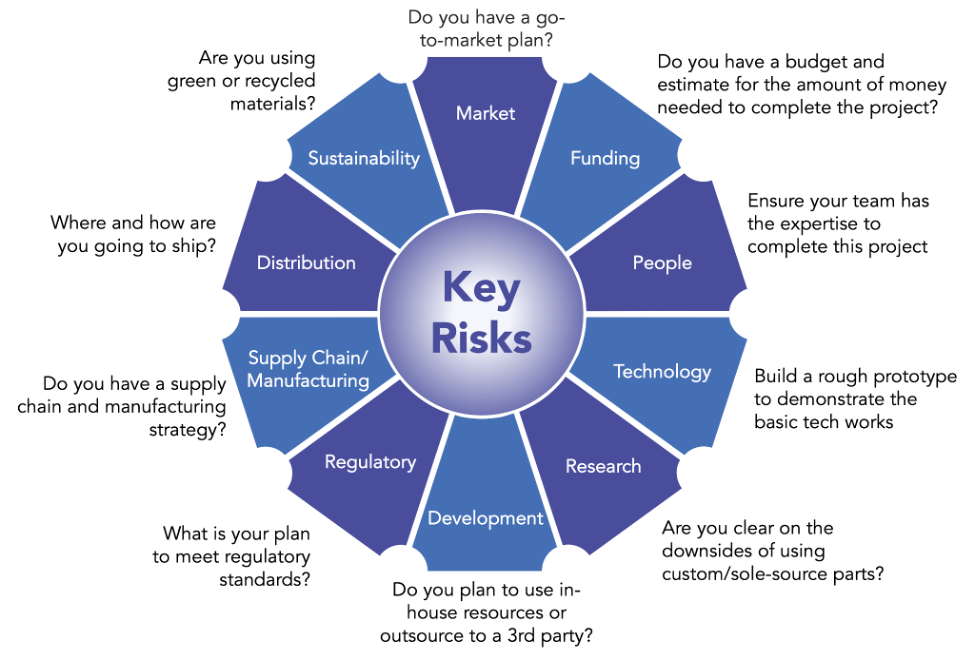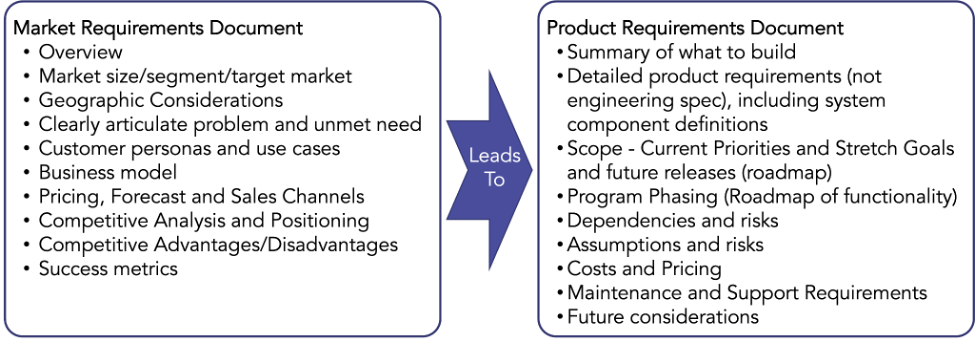
3. CONCEPT & FEASIBILITY PHASE – Part 2: Feasibility

Product Feasibility
Once you have a better understanding of your target market and can clearly articulate your customers’ problems, ask yourself if you are confident the product is feasible and can be developed within a reasonable time period?
For many hardware companies, a 12-18+ month development cycle is the norm. But, if your new product requires “research and development” that can drastically increase both schedule and cost.
Next, you should understand the different risks that can affect your schedule and develop a plan to mitigate each one. To understand the risks, ask yourself the following questions:

Intellectual Property
Intellectual property (IP) is another important factor to consider in this phase. For startups and larger companies that are developing new and innovative products, it’s important to understand what the existing technology landscape looks like and to develop an IP strategy with a competitive sustainable advantage.
On one-hand, filing a provisional patent will provide some protection if another firm infringes on your IP. But, the process of filing a patent can also provide competitors with advantageous insights into your new product, process, and design methodology.
The process to file a patent can also be expensive and take months to complete. So, for early stage startups, it may be better to focus on execution and to get ahead of your competition. A counterexample is larger, established companies with a lot of resources and revenue that can afford to spend time and money on patents to protect their IP.
In the end, it depends on your specific situation and, as a manager, you must decide what option is best for your company.
Putting it all together
The last step in this phase is to write the Market Requirements Document (MRD) and Product Requirements Document (PRD). These documents aggregate the information you collected in the earlier “Concept & Feasibility” stage and provide a solid foundation to support the product development process.
Below are examples of key sections in each document:

These two key documents are the foundation that define the product and all other documentation produced in the development process uses them as the guide to the requirements for the product as well as how to prove that these requirements are being met as the development progresses. A clearly defined and documented strategy to mitigate risks and leverage your IP will pay dividends down the road.
In the later sections of this work you will see how this document chain culminates in a product that meets the market need and is fit for purpose.
In the next few weeks, we will cover Part 2 – Design & Planning and discuss minimum viable products, design for excellence, manufacturing plans and target costs for production systems.

Mike Freier is Founder and Principal Consultant at the Product Management Consulting Group Inc. He has 20+ years of experience with high-tech companies, including more than a decade in product management and product marketing. He was a long-time board member and President of the Silicon Valley Product Management Association, served on the MIT-Stanford (VLAB) executive planning committee and spent several years mentoring start-up founders at the Cleantech Open. Mike graduated from the University of Massachusetts at Amherst with a BSME degree.



